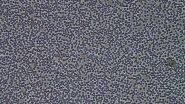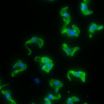(Press-News.org) Orchestrated costume changes make it possible for certain nasty microbes to outsmart the immune system, which would otherwise recognize them by the telltale proteins they wear. By taking the first detailed look at how one such parasite periodically assumes a new protein disguise during a long-term infection, new research at Rockefeller University challenges many assumptions about one of the best-known examples of this strategy, called antigenic variation, in the parasite that causes African sleeping sickness.
For research published on March 27 in Science, a team at Rockefeller University tracked the appearance and disappearance of these protein coats within the blood of mice infected by Trypanosoma brucei. Their results reveal an unexpected diversity in disguises present at any one time and challenge the conventional understanding of the dynamics that allow the parasite to persist.
Spread by the Tsetse fly in rural Africa, T. brucei travels through the blood and across the blood-brain barrier to cause potentially fatal disease that disrupts circadian rhythms, hence the name sleeping sickness. T. brucei, like the malaria parasite and some other pathogens, relies on antigenic variation to stay one step ahead of their hosts' immune systems.
Here's how it works. Many animals, including humans, have immune systems capable of learning to recognize pathogens based on those pathogens' antigens, usually proteins on their surface. After encountering an antigen, the immune system generates its own proteins called antibodies to target that antigen. By continually changing antigens, a pathogen evades those antibodies.
T. brucei's protein disguise comes from a family of variant surface glycoproteins (VSGs). At any time, a single VSG covers the parasite and, during an infection, the parasites in the bloodstream periodically switch to a new VSG. Together with Nina Papavasiliou and André and Bella Meyer Professor Emeritus George Cross, Monica Mugnier, a graduate student in Papavasiliou's lab, set out to take a close look at these switches by tracking the VSG genes expressed over time during an infection.
"Little is known about the dynamics of VSG switching by the sleeping sickness parasite. What is known is that the coat is highly antigenic and stimulates a very strong immune response that wipes out most of the parasite population. The prevailing paradigm regarding the ability of the parasite to evade the immune response comes from studies completed decades ago, which suggested that a parasite changes its coat and stimulates an immune response on a weekly basis. Monica's work totally upends this picture, and therefore the assumptions about how this parasite interacts with the immune response" says study author Associate Professor Nina Papavasiliou, head of the Laboratory of Lymphocyte Biology.
A novel technique Mugnier developed to track the rise and fall of individual VSGs over time made this new insight possible. , "Previously, it was assumed that, as the immune system begins to recognize a parasites' VSG and clear it, only one or a few VSGs would emerge to make up the next wave of parasites. However, our results contradict this paradigm," Mugnier says. "We find as many as 80 distinct trypanosome coats at any given time".
"This has substantial implications for the interaction of this parasite with its host" says Cross. For example, it is now clear that the diversity of the VSGs required to maintain an extended infection exceeds the number of functional genes responsible for encoding them. This raised a question, since T. brucei infections can last for years. How does the parasite generate enough unique VSGs to continue fending off the immune system for that long, considering its repertoire of pre-existing genes?
Previous research suggested the answer: by mixing and matching. T. brucei has nearly 2,000 functioning and nonfunctioning VSG genes. By recombining these, the parasite can create many new disguises. This mechanism is likely a crucial source of VSG diversity for the parasite, according to the researchers, who identified a number of so-called mosaic VSGs, and, for the first time, documented the timing of their appearance during the course of the infection.
"Antigenic variation is both key to T. brucei's success and its Achilles' heel. This strategy has made it impossible to develop a vaccine against sleep sickness, but without antigenic variation this parasite would not stand a chance against a healthy immune system," Mugnier says. "The methods we developed lay the foundation for a better understanding of the diseases caused by African trypanosomes, and by other pathogens whose long-term infections are facilitated by antigenic variation, which could improve our strategies for fighting these infections."
INFORMATION:
A new study led by Scripps Institution of Oceanography at UC San Diego researchers has revealed that the thickness of Antarctica's floating ice shelves has recently decreased by as much as 18 percent in certain areas over nearly two decades, providing new insights on how the Antarctic ice sheet is responding to climate change.
Data from nearly two decades of satellite missions have shown that the ice volume decline is accelerating, according to a study published on March 26, 2015, in the journal Science and supported by NASA. Scripps graduate student Fernando Paolo, Scripps ...
HOUSTON - (March 26, 2015) - Taking out the garbage is a crucial step in housecleaning.
Similarly, autophagy is the body's first-line of defense against the buildup up of toxic substances, degrading old organelles and proteins to provide new substrates and building blocks. In this way, autophagy prevents the buildup of "garbage" that can result in destruction of neurons and cause neurologic diseases.
A forward genetic screen in Drosophila melanogaster (fruit flies) identified mutant copies, or alleles, of a gene called cacophony associated with defects in autophagy ...
While most of us recover from influenza after a week, it can be a very severe disease, and even fatal in rare cases, with no reason for physicians to have expected such an outcome. By analysing the genome of a little girl who contracted a severe form of influenza at the age of two and a half years, researchers at the Laboratory of Human Genetics of Infectious Diseases (a joint French-American international laboratory), which brings together researchers from Inserm, Paris Descartes University, and physicians from the Paris public hospitals (AP-HP; Necker Hospital for Sick ...
New research shows bacteria can use tiny magnetic particles to effectively create a 'natural battery.' According to work published in journal Science on 27 March, the bacteria can load electrons onto and discharge electrons from microscopic particles of magnetite. This discovery holds out the potential of using this mechanism to help clean up environmental pollution, and other bioengineering applications. The European Association of Geochemistry is highlighting this work as especially interesting.
According to study leader Dr James Byrne (Tübingen):
"The geochemistry ...
A study led by Cathy Spatz Widom, Distinguished Professor of Psychology at John Jay College, found that offspring of parents with histories of child abuse and neglect are themselves at risk for childhood neglect and sexual abuse but not physical abuse. Titled "Intergenerational Transmission of Child Abuse and Neglect: Real or Detection Bias?" the study's findings were reported in the March 27 issue of the journal Science.
As part of a prospective longitudinal study, Widom followed a large group of children with documented cases of childhood abuse and neglect and a demographically ...
A new study, published today in the journal PloS Neglected Tropical Diseases has given new insights into the spread of rabies in the Middle East, showing that the deadly disease regularly moves between countries in the region.
The international team of researchers including scientists from the University of Surrey and the Animal and Plant Health Agency, have mapped the spread of rabies in the region to help inform control methods.
Previous studies have demonstrated that rabies, a fatal disease transmitted by the bite or scratch from an infected animal, still kills approximately ...
Dark matter is one of science's great mysteries. It makes up an enormous amount matter in the universe, it is invisible, and it does not correspond to anything in the realm of our experience. Different theories compete for an explanation, but so far none of them has prevailed. In a collaborative study between École Polytechnique Fédérale de Lausanne (EPFL) and the University of Edinburgh, scientists have studied how dark matter behaves when galaxy clusters collide with each other over billions of years. Published in Science, their findings challenge at least ...
Foraging bats obey their own set of 'traffic rules', chasing, turning and avoiding collisions at high speed, new research from the University of Bristol, UK has found.
Dr Marc Holderied of Bristol's School of Biological Sciences studied pairs of Daubenton's bats (Myotis daubentonii) foraging low over water for stranded insects at a site near the village of Barrow Gurney in Somerset, UK.
He said: "Collective movements of flocking birds or shoaling fish are amongst the most fascinating natural phenomena, and everyone has experienced the challenges of walking through ...
CHAPEL HILL, NC - A team of researchers has discovered HIV can begin replicating in the brain as early as four months after initial infection. The study followed 72 treatment naïve participants during the first two years of HIV infection. Through analysis of cerebral spinal fluid (CSF) and blood samples, 20 percent of subjects showed replication in the central nervous system (CNS) at four months. Additionally, 30 percent of participants showed evidence of a marked CSF inflammatory response in at least one time point and 16 percent of study volunteers showed a marked ...
The fact that the neutron is slightly more massive than the proton is the reason why atomic nuclei have exactly those properties that make our world and ultimately our existence possible. Eighty years after the discovery of the neutron, a team of physicists from France, Germany, and Hungary headed by Zoltán Fodor, a researcher from Wuppertal, has finally calculated the tiny neutron-proton mass difference. The findings, which have been published in the current edition of Science, are considered a milestone by many physicists and confirm the theory of the strong interaction. ...


